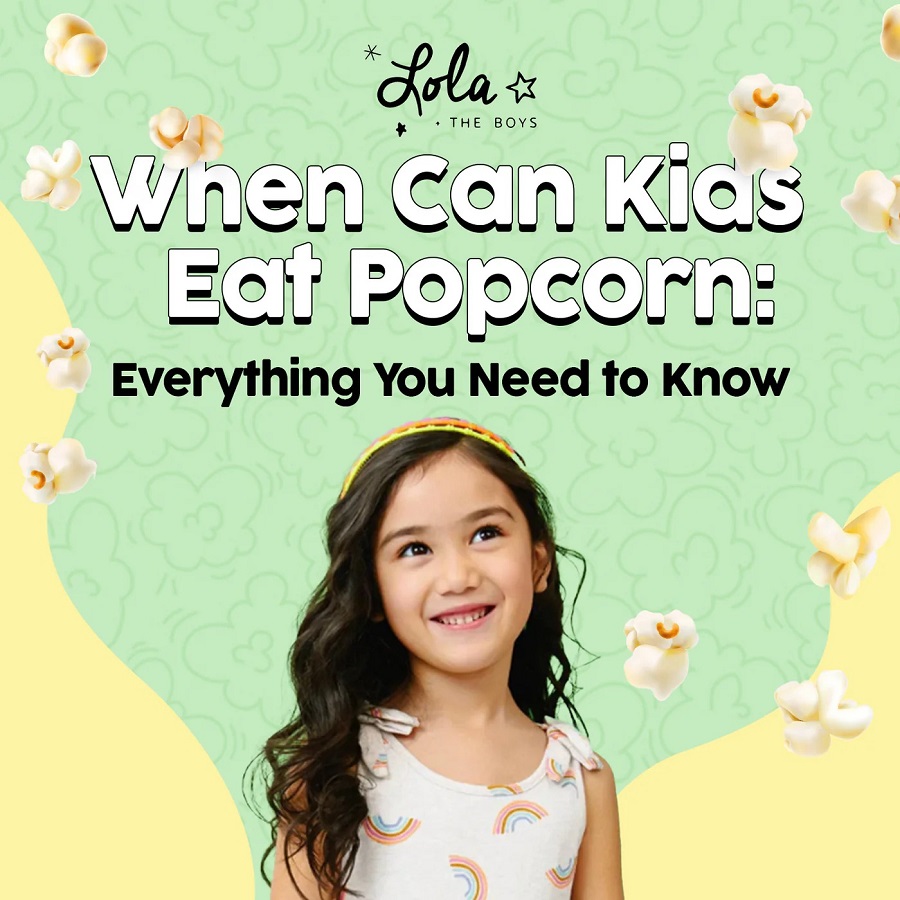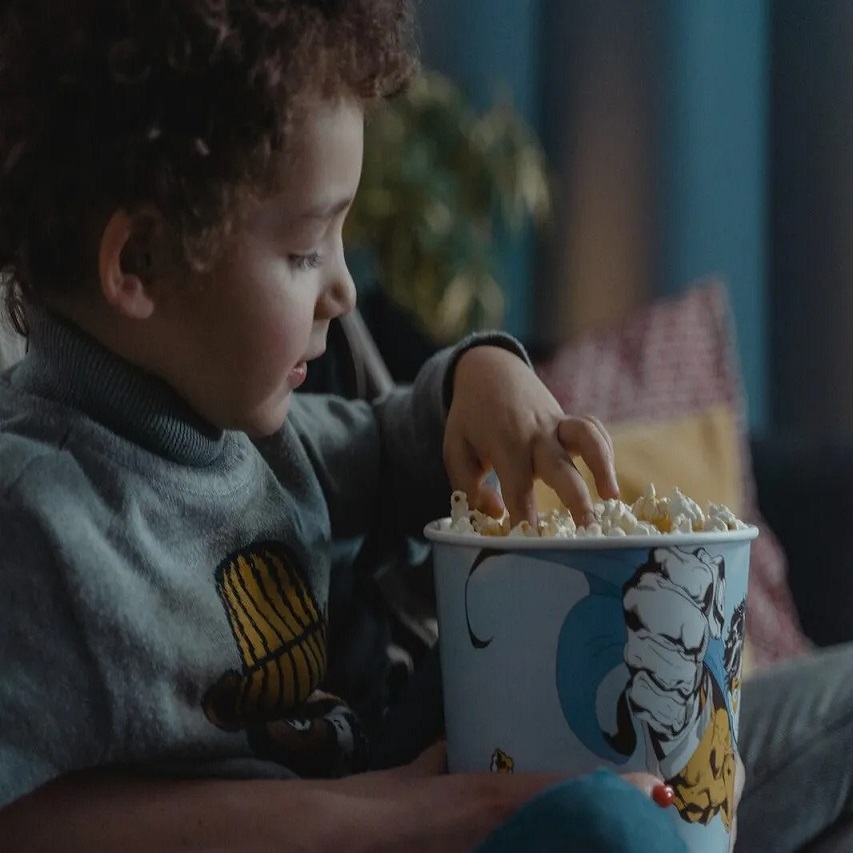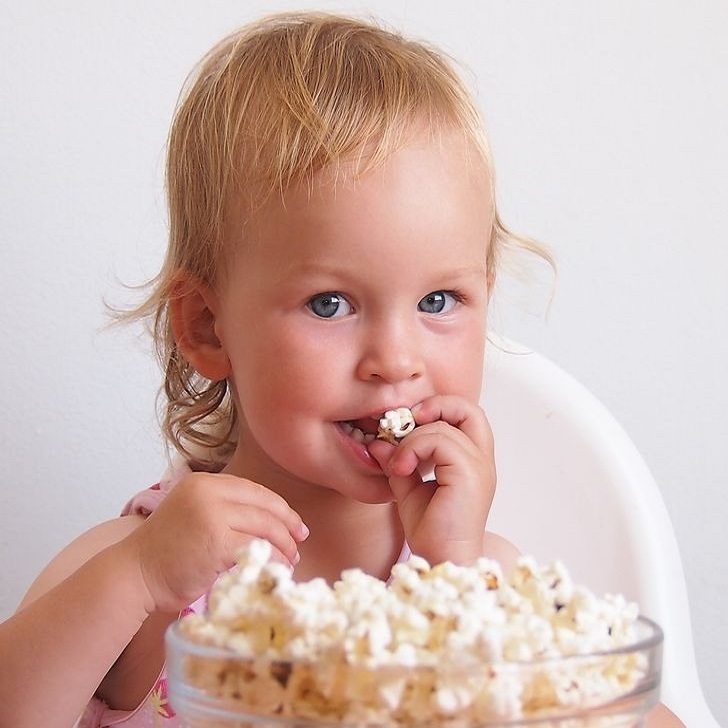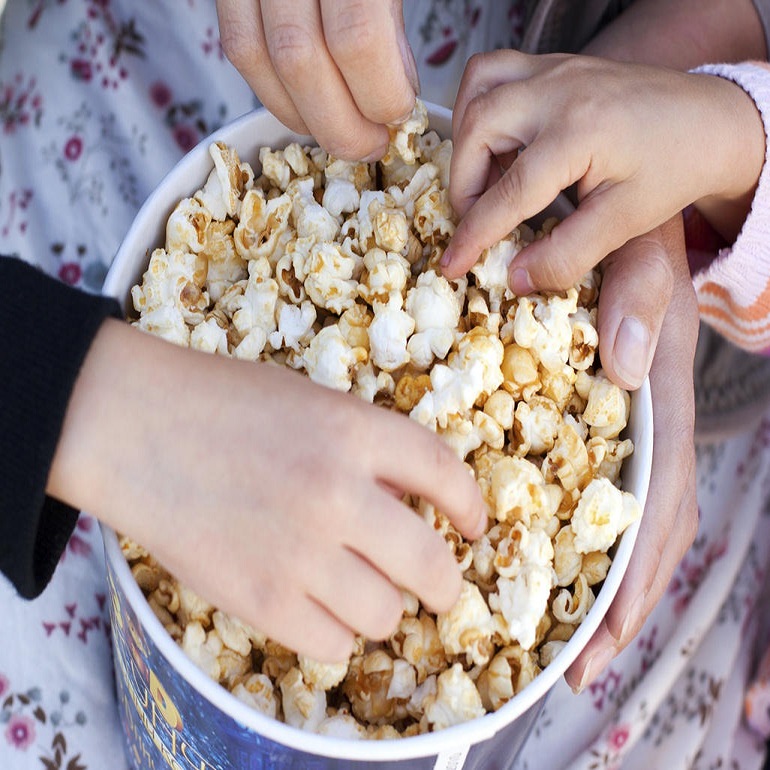The Risks of Giving Popcorn to Toddlers
When considering when can toddler eat popcorn, it’s essential to understand the risks involved. Popcorn can be a choking hazard for toddlers due to its size, shape, and texture. The kernel pieces are small and hard, which can easily get lodged in a child’s throat. Moreover, the airy, fluffy nature of popped popcorn can cause it to stick to the back of the mouth or the airways, making it difficult for toddlers to clear if they start to choke.
Another risk is that the unpopped kernels, often found at the bottom of a popcorn bag or bowl, are especially hard and can cause dental damage or a severe choking incident if accidentally ingested. Additionally, toddlers are still developing their chewing and swallowing skills, and might not effectively grind down the popcorn before attempting to swallow, increasing the risk of choking.
It’s important to consider these risks because the consequences of choking can be severe. A choking child can suffer from a lack of oxygen, leading to serious complications, including death. Even a small choking incident that is quickly resolved can be traumatic for both the child and the caregiver. Hence, ensuring your toddler’s safety around popcorn is a critical responsibility that should not be taken lightly. Keeping these risks in mind will help caregivers make informed decisions about when and how to safely introduce popcorn in the diet of their young ones.

Appropriate Age for Introducing Popcorn to Children
When considering when can toddler eat popcorn, age is a crucial factor. Most health experts agree that toddlers under the age of four should not eat popcorn. This is due to their still developing chewing and swallowing abilities. For older children, the exact age to introduce popcorn can differ. Each child’s development is unique. It’s best to wait until you are confident in your child’s ability to chew and swallow effectively.
Before offering popcorn to a child, observe their eating habits with other solid foods. Look for signs that they are chewing well and not swallowing food whole. Also, make sure they can sit upright while eating. This reduces the risk of choking.
Although four years old is a general guideline, some children may be ready a bit earlier, while others may need more time. Always prioritize safety and your child’s developmental stage, rather than age alone. For personalized advice, consult with your pediatrician or a child nutrition expert.
Alternatives to Popcorn for Young Children
Given the risks involved, it’s wise to consider safe alternatives to popcorn for young children. Here are a few options that can delight your toddler’s taste buds without the same choking hazards.
- Puffed Rice or Puffed Corn: These airy snacks are similar in texture to popcorn but are easier for young toddlers to chew and swallow.
- Oat Cereal: Cereal pieces made of oats are often softer and dissolve more easily in the mouth, making them a safer choice.
- Bite-Sized Soft Cooked Vegetables: Small, soft pieces of vegetables like carrots or peas are nutritious and less of a choking risk.
- Cheese Puffs: Choose whole grain or low-sodium varieties of cheese puffs. These dissolve quickly in the mouth and are often enjoyed by little ones.
- Soft Fruits: Soft and ripe fruits cut into small pieces, such as banana or pear, provide a healthy snack option.
These alternatives not only reduce the risk of choking but also offer nutritional benefits suitable for a young child’s development. When considering when can toddler eat popcorn, remember that there’s no need to rush. Until they reach an appropriate age, these substitutes can provide peace of mind and keep snack time safe and enjoyable.
Preparing Popcorn Safely for Older Toddlers
When the time comes to introduce popcorn to your older toddler, preparation is key. Here are steps to make it safer for them:
- Choose the Right Type: Pick plain, air-popped popcorn over the microwave or pre-packaged varieties. This avoids added chemicals and choking hazards like unpopped kernels.
- Keep It Simple: Avoid toppings like butter, caramel, or nuts that can clump together and make the popcorn harder to swallow.
- Monitor Size: Break larger flakes into smaller pieces. This helps prevent the fluffy parts from getting stuck in your toddler’s throat.
- Supervised Snacking: Always stay with your toddler while they eat popcorn. Watch for signs of difficulty and be ready to act if they start to choke.
By following these steps when deciding when can toddler eat popcorn, you help ensure their snack time is not only enjoyable but also safe. Remember, even with older toddlers, vigilance during snack time can never be overstressed.

Tips to Reduce Choking Hazards
When guardians ponder when can toddler eat popcorn, reducing choking hazards is a priority. Here are practical tips to ensure safer snacking for toddlers:
- Serve in Small Quantities: Offer popcorn in small amounts. Too much at once can overwhelm a toddler’s mouth.
- Stay Close By: Always supervise toddlers while they eat. Being nearby allows quick action if choking occurs.
- Encourage Slow Eating: Teach toddlers to eat slowly and chew thoroughly. This helps prevent large pieces from being swallowed.
- Create a No-Walking Rule: Ensure toddlers sit down to eat. Eating while walking or running increases the risk of choking.
- Hydration Helps: Provide water to drink with snacks. Liquids can assist in moving food more easily down the throat.
- Check for Allergies: Be aware of possible allergic reactions that can cause swelling and increase choking risks.
Following these guidelines can lower the risks associated with popcorn and help determine when can toddler eat popcorn safely. Guard against choking hazards by taking appropriate steps and attentively monitoring snack time.
Creative Ways to Serve Popcorn to Toddlers
Once it’s safe for your older toddler to try popcorn, making it fun is key. Here are creative serving ideas:
- Make a Popcorn Trail: Lay out popcorn pieces in a line on a clean table. This encourages fine motor skills as children pick up each piece.
- Popcorn Art: Toddlers can decorate safe surfaces with damp popcorn to create temporary art. Be sure to watch them to prevent any pieces from going into their mouths unsupervised.
- Counting Game: Use popcorn to teach counting by having toddlers place a certain number of pieces into a bowl.
- Popcorn Shapes: Press damp popcorn into different shapes on wax paper. Toddlers can enjoy creating a star or a heart with your guidance.
- Colorful Popcorn: Add a little food coloring to a small amount of water and dip popcorn in it to make vibrant colors. Let it dry before offering and ensure the food coloring is safe for consumption and non-toxic.
These activities help engage toddlers and allow them to enjoy popcorn in a playful and structured way. Remember, always stay within arm’s reach when toddlers handle popcorn to minimize choking risks. Incorporating these fun techniques can make the transition to eating popcorn a positive experience while still prioritizing safety. When considering when can toddler eat popcorn, balance is essential between enjoyment and vigilance.
Educating Caregivers and Siblings About Popcorn Safety
When planning when can toddler eat popcorn, educating everyone involved in childcare is crucial. This includes caregivers, parents, and older siblings who might share food with the toddler. Here’s how to cultivate a safe environment:
- Discuss Choking Risks: Clearly explain the choking hazards of popcorn. Use simple terms so siblings understand.
- Establish Rules: Create firm rules about not giving popcorn to toddlers. Make sure everyone follows them.
- Model Safe Eating: Kids mimic adults. Show safe eating habits, like sitting down while eating, to set a good example.
- First Aid Knowledge: Teach everyone basic first aid for choking. Practice the steps together.
- Snack Monitoring: Assign a responsible person to monitor the toddler during snack times.
- Safe Alternates: Educate on safe alternatives to popcorn. This helps avoid the temptation of sharing unsafe snacks.
By spreading awareness on popcorn safety, you form a protective circle around the child. Every caregiver and sibling becomes a guardian of the child’s well-being when it comes to snacks.

Understanding Choking Hazards and Prevention Strategies
When discussing when can toddler eat popcorn, understanding choking hazards and implementing prevention strategies is paramount for toddler safety. Choking is a silent danger; often, it occurs quickly and without noise, leaving little time for intervention. To mitigate these risks, consider the following strategies:
- Educate Yourself on Choking Signs: Recognize the signs of choking, such as inability to cry or cough, face turning blue, or a high-pitched sound when breathing.
- Learn Heimlich Maneuver: Adults and older children should know how to perform the Heimlich maneuver or abdominal thrusts on toddlers in case of a choking emergency.
- Childproof the Eating Area: Keep the eating area free from small objects that could cause choking. This includes toys, coins, or other small items.
- Food Size and Texture: Ensure all foods offered to toddlers are appropriate for their age. Cut food into small, manageable pieces that they can easily chew and swallow.
- Focus on the Toddler During Meals: Avoid distractions such as TV or smartphones during mealtime. This allows you to be fully attentive to your toddler.
By comprehensively understanding and addressing the risks associated with choking, you can more appropriately decide when can toddler eat popcorn and take steps to make it a safer experience.
